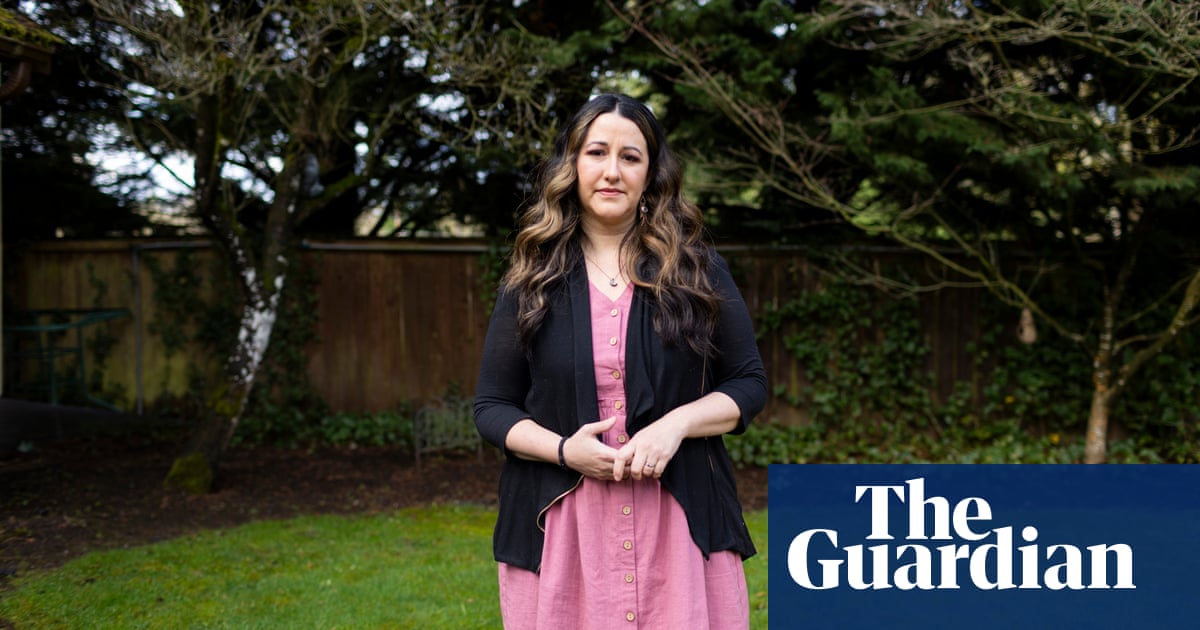It was a cool May afternoon in 2002. I was 19 and had driven to Westport beach in Washington with a few friends to enjoy a day by the ocean.
As a child, I’d been a keen gymnast, always doing backflips and energetic routines. As I got older, I still had a habit of doing cartwheels whenever I found an open space. That day on the beach, on the soft, flat sand, I couldn’t resist.
I ended up doing 13 in a row, collapsing into giggles afterwards. My friend ran over to help me up, laughing, too. Overcome with dizziness, I noticed something strange: I couldn’t see my friend’s face. It was an orange blur. My peripheral vision seemed normal, but when I focused directly on her, there were no details. I shook my head, but the sensation didn’t fade.
We joked that maybe I needed to do 13 cartwheels in the opposite direction to unscramble my brain. I lay down on a blanket and we stayed at the beach for another hour or so, but my eyesight wasn’t getting any better. I was a little concerned, but tried to stay calm. I wasn’t in any pain and told my friends not to worry.
I began to panic only when we wandered along a shopping street later that day and I found it difficult to read even simple signs. Every time I tried to focus on text or details, the same orange blur obscured my vision. When I got home in the evening, I told my mum what had happened. She was concerned and said if it was still bad in the morning, we’d go to the hospital. I tried to convince myself that sleep might help.
But the next morning, it felt even worse. My stepdad noticed that I was struggling with basic tasks and took me to the emergency room. After examining my eyes, the doctors’ initial diagnosis was that I had sustained sun damage to my retinas and it might take a couple of weeks to heal. Hearing this was distressing, especially with my final exams looming.
It turned out to be even worse than I feared. After consulting an ophthalmologist, it transpired that I had ruptured blood vessels in my macula, the central part of the retina responsible for detailed vision. The amount of blood was small – like a tiny ink dot – but enough to block my central vision. She said it would take far longer than two weeks to heal: if I was lucky, I might be able to see again in three months. I was legally blind – I wouldn’t be able to drive, finish my studies or watch TV. I was devastated.
I was forced to rely on others for simple tasks, such as making lunch or sending a text. I hardly left the house. My friends rallied round and I tried to stay positive, but it was hard.
It took a long time, but the blood gradually reabsorbed and my sight slowly began to improve. Three months later, my central vision returned. Still, the experience had a lasting impact. I developed early-onset macular degeneration – a condition that, at 42, leaves me with the eyes of an 80-year-old.
In the years that followed, I experienced milder episodes of vision loss. On one occasion, it happened during a spirited singalong in the car with a friend, but just for a few days; another time, while I was weeding blackberry bushes.
When I became pregnant, I was advised that the strain of labour could trigger another episode. I opted for a scheduled C-section – I couldn’t bear the thought of not being able to see my son for the first few months of his life.
Sign up toInside Saturday
The only way to get a look behind the scenes of the Saturday magazine. Sign up to get the inside story from our top writers as well as all the must-read articles and columns, delivered to your inbox every weekend.
after newsletter promotion
I never felt angry about my condition, but I did want answers about why it happened. My grandmother told me that a similar issue had affected a distant family member, suggesting that it might be genetic.
For now, doctors are monitoring my condition carefully, but there’s a risk the complications could return. I can’t bear the thought of what I’d miss if I lost my eyesight for ever. I’m more cautious doing physical activity and avoid anything that might cause a rush of blood to my head.
It’s now been more than two decades since I attempted a cartwheel. At times, I miss it. But some things simply aren’t worth the risk, no matter how joyful they once felt.
As told to Sophie Haydock
Do you have an experience to share? Emailexperience@theguardian.com
